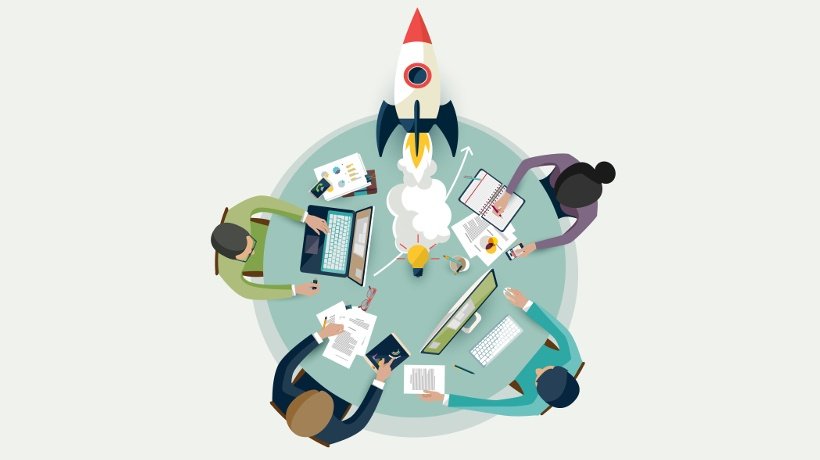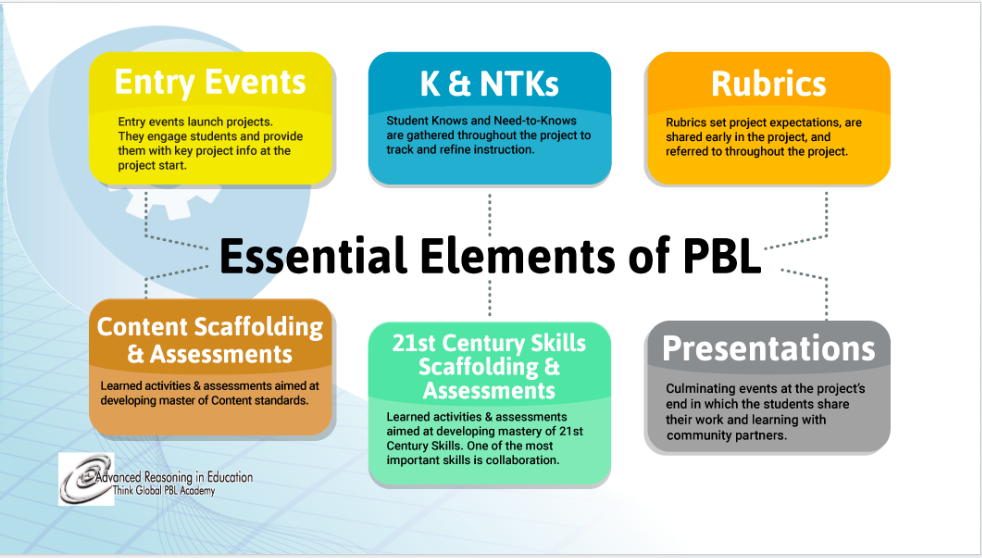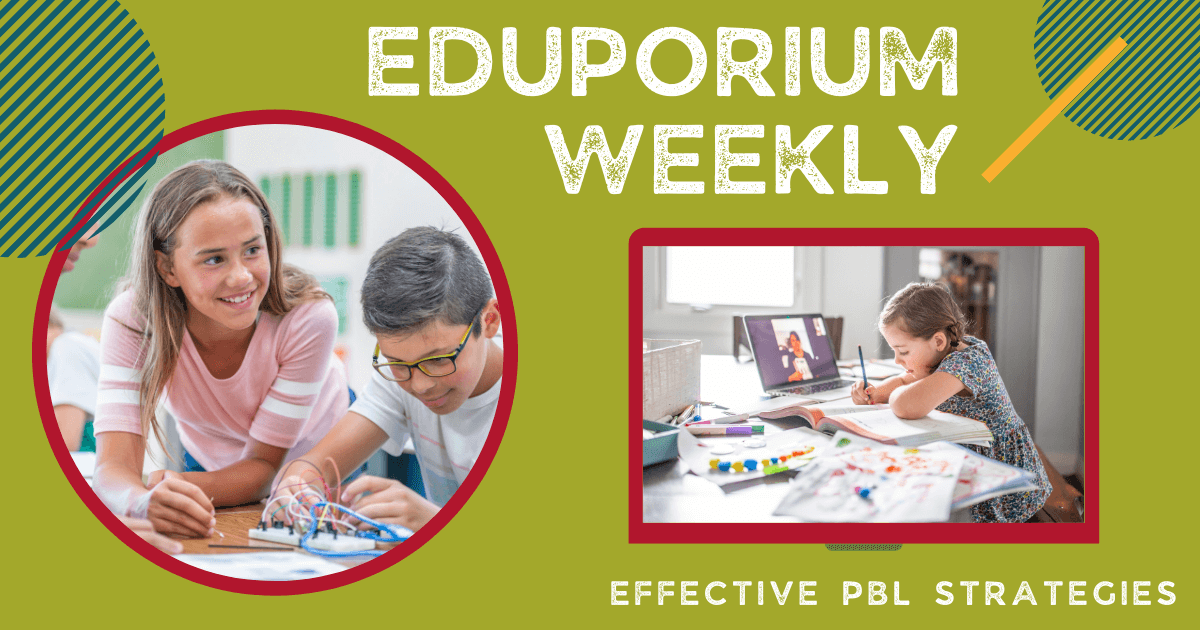Project-based learning is a highly effective instructional approach with signature features that often include increased community involvement and active collaboration among your students. If you have researched or implemented project-based learning initiatives, you're definitely not alone. Or, maybe you've dabbled in it, but never really committed, leaving the door open for opportunities in the future. Anyway, if you believe that some children would benefit from something new, we'd definitely suggest exploring PBL. It can really help students to get active, discover passions, and engage up-close with what they’re learning, helping them to grow and develop key real-world skills along the way. Plus, it doesn't have to break the bank or create lots of new responsibilities for teachers.
Students Deserve PBL Experiences
When we look at project-based learning and all of the opportunities it creates for children, the list is always growing. PBL is very effective for engaging students and aligning classroom content with its implications in the real world. It also enables students to practice real-world problem solving, which regularly has a lasting effect on their achievements. PBL isn’t something that every student gets to experience, however, and that is not always ideal. It often helps promote deeper learning with some degree of efficiency and also helps children build skills for the 21st century. Through project-based experiences, students learn more than just factual knowledge, including how to find relevant information, evaluate it, and apply it effectively while they work towards solving problems.
Another way that PBL benefits students is in making school more meaningful for them. Throughout history, our students have spent too much of their school days feeling bored, which easily leads to disengagement. PBL, however, helps connect them with projects they actually care about and, when their hearts are fully in it, their minds tend to follow closely behind. If students have gone through grade after grade without active learning opportunities, they are likely to exhibit signs of disinterest. Teachers can combat this with projects that align with their identities, passions, and experiences outside of school. Truthfully, it shouldn’t come as much of a surprise that kids won’t want to focus on assignments that are not relevant to them, so finding a way to bring as much relevance as possible to their learning will never hurt.
Since PBL assignments allow educators to incorporate real-world issues and concerns, they can be truly transformative for students. They can go out into their communities and have conversations with people in various professions to gain first-hand knowledge. These are experiences that students rarely have within a traditional classroom but they offer some of the most valuable learning they’ll get. Throughout the projects, students have the chance to make a real impact on their world and the community they live in, which is far more rewarding to most of them than receiving a good grade. All throughout a PBL journey, students take responsibility for their own learning and prepare to make impactful contributions.
What Students Can Really Learn through PBL
We'll regularly advocate for project-based learning experiences in education—and for good reason. One of the simplest ways for educators to advocate for PBL, themselves, is by understanding how various real-life learning experiences help children understand more than just content. They learn key skills and they'll learn more about the real world through this intentional combination of curricular content with hands-on problem solving. This means that children will often get the chance to read about a particular topic, discuss why it’s relevant, and then get hands-on with a relevant project or in designing a solution. It often involves working together on research or applying their knowledge in the real world as well. And, it is typically the case that the real learning comes once they put down the books and take action.
Collaboration is a very important element of project-based learning since it mirrors the collaborative nature of the real world. Through collaborative school projects, students get to learn how to express themselves and their ideas as well as how to advocate for themselves and the collective positions that the group holds. Emphasizing that there is often no ‘right’ answer in project-based challenges, teachers can encourage their students to try some new things to make connections between what they already know and new concepts. The learning also includes elements of student choice, which helps them to feel increasingly engaged and empowered. It even helps them feel like they're able to take control of how and what they learn.
So much of the real world involves finding creative ways of overcoming challenges, which kids can practice by working together. In any team, each group member brings different skill sets, which allows everybody to focus on their strengths. Plus, having people of different backgrounds helps ensure that little details do not go unnoticed since they often draw on their experiences and unique skills to catch everything. Since there isn't any one skill that fully ensures future successes, one way to prepare children is helping them learn to evolve and adapt. PBL tasks can help them build their problem-solving abilities and account for changing conditions. Plus, they will learn about accountability, working as a team, embracing new ideas, and taking ownership of outcomes and processes.

PBL Done Right
One common experience students have is raising money for their class—maybe for field trips, an event, or something else. What many teachers have started doing in recent years, however, is turning this aspect of fundraising into project-based learning experiences. And, when you think about it, this idea actually makes lots of sense. In project-based learning, children often need to collaborate to solve a problem—usually one that’s persisting in their communities. Fundraising also is not all that different from PBL. Students still must work together to find creative ways to raise money, which helps them achieve something (whether they are trying to reach a certain quota or solve a problem, they still have a defined goal to work towards). Although it’s a commonly used process, this model still provides students with valuable real-world lessons.
We’re just using fundraising campaigns as an example, but this kind of approach can really work within any PBL-related challenge. It’s an awesome opportunity for students to get in groups and essentially divide and conquer. Assigning each student a specific role is smart and gives them valuable experiences with the real-world implications. One member could create a plan, for example, and another can market it while some of the other team members are responsible for production and somebody else is responsible for all the group finances (again, roles will depend on the exact type of project that’s being done). This helps students focus on something they’re either skilled at, passionate about, or want to learn about. It can also uplift voice and choice and opportunities to explore some of the skills they'll need for the future.
Projects like that help students visualize what success looks like and then devise a plan to achieve it. They can also gauge which important soft skills they might need to spend a little more time on developing. For effective PBL, educators should ensure the task includes clear learning goals that align with standards and creates a connection to some real-world concept, like economics, for example. These assignments should also center on students solving a real-world problem that has some significant meaning to them. And, that problem should come with real-world context and involve their real-world problem-solving process as well. Finally, connecting projects to student concerns, interests, and identities is often effective and so are those opportunities for kids to reflect on what they learned throughout the process. If nothing else, hopefully you now have some great ideas to start with!
Combining Tech and PBL to Make Learning Stick
Project-based learning, as we’ve indicated throughout this post, provides children with high-value learning experiences even without any inclusion of technology. Put those two together, however, and these learning opportunities continue to increase. Learning by doing helps children develop key skills in different types of educational environments and also helps them apply key concepts in and out of their classroom, including in future careers and while they are still in school. Now, you have so many ways to incorporate technology in learning, including using 3D printing, coding platforms, or MakerEd tools. With the continuing evolution of instructional technology, project-based learning opportunities will also become more attractive.
When they're coupled, technology and project-based learning can create amazing academic outcomes for students of all ages. When this pairing happens, students should gain confidence in using the tools at their disposal in creative problem solving. Practice with PBL in school helps kids develop their tech literacy and using technology to solve problems independently or collaboratively. They can also see how to apply what they’ve learned throughout this process to experiences outside of that particular project. Since technology (whether digital or physical) is always connected, kids could use it to discover interactive solutions, record data, and enhance collaboration. As you may be thinking, these are all definitely tied to being prepared for the real world as well.
So, what kinds of technologies are ideal for PBL in K-12 schools? Well, the simple answer is that many top PBL technologies are also some of those most commonly seen throughout STEM instruction. Two of those examples are 3D printers and virtual reality equipment. In PBL, 3D printing enables students to create new parts or pieces for just about anything. And, virtual reality can enable teachers to take their students to any places they're often unable to physically visit. That also provides value by helping children see new places, allowing them to then apply their insights in problem solving. Then, there are the STEAM tools, like LEGOs, for constructing devices and helping children to build up a foundation for designing more complex devices with more complex technologies in the future.

Overcoming the Difficulties in Implementing PBL
While a completely project-based curriculum sounds perfect in theory, in actuality, it’s often challenging to fully implement. Kids are used to learning in certain ways or they may even be indifferent when it comes to their day-to-day education. So, while PBL has the potential to provide them with more palatable and active learning experiences, educators cannot simply flip a switch and expect students to instantly become more engaged and enthused just because they’re using a new kind of pedagogy. In order for any PBL lessons to work effectively, teachers must meet certain standards using certain strategies to arrive there. At the same time, keep in mind that PBL implementation may also be challenging, so developing clear goals is key.
Like with many new classroom initiatives, you may notice some growing pains when it comes to initial PBL implementation. There are certain conditions that'll likely already exist inside many classrooms—possibly preventing perfect rollouts. That, however, does not mean that educators can't identify, address, and then overcome these conditions. Three of the most common speed bumps teachers face when they introduce PBL are assessing those students who lack the skills and knowledge to succeed effectively, working with students who lack a realistic expectation of what the work will be like, and overcoming cases of students not having previous experience with working independently. It’s nothing against these students, but their previous education experiences likely contributed to these conditions.
When it comes to a lack of knowledge, children can sometimes improve by focusing on building up certain skills. PBL helps them bolster skills, like collaboration, critical thinking, and communication, which can help make up for some previous deficits. Using a whole-school approach and leveraging this across every class could be effective. Also, students should know what to expect from these projects and their effort. Holding students accountable is a big part of PBL and, of course, part of the real world. They need to be rewarded for this determination and (gently) reprimanded when they lack effort. Kids also can’t be avoiding their PBL work and teachers need to make sure this is clear. Finally, for PBL to succeed, kids must become their own agents of learning. Taking charge of topics, planning, revisions, and more is what PBL is all about—helping teachers and students thrive.
For the latest EdTech, STEM, and 21st century education news, follow us on Twitter and Instagram. Like us on Facebook, too, or sign up for our newsletter for our latest product announcements and offerings. If you have an idea for an Eduporium Weekly theme, send us a message on social media or comment below.



